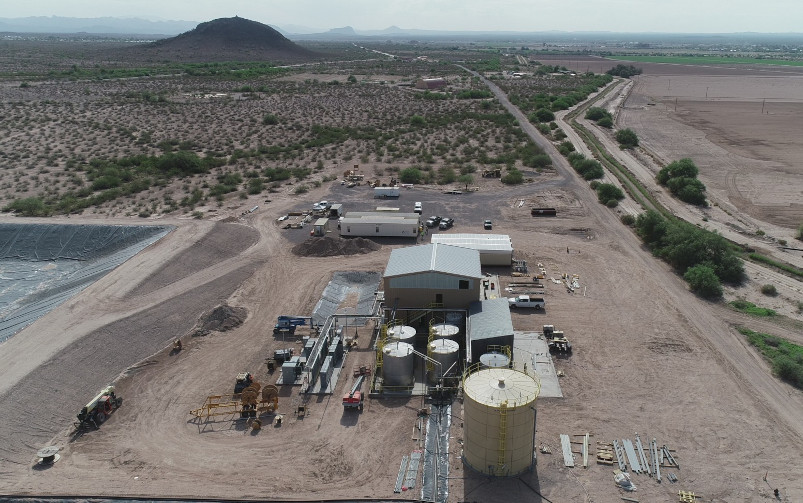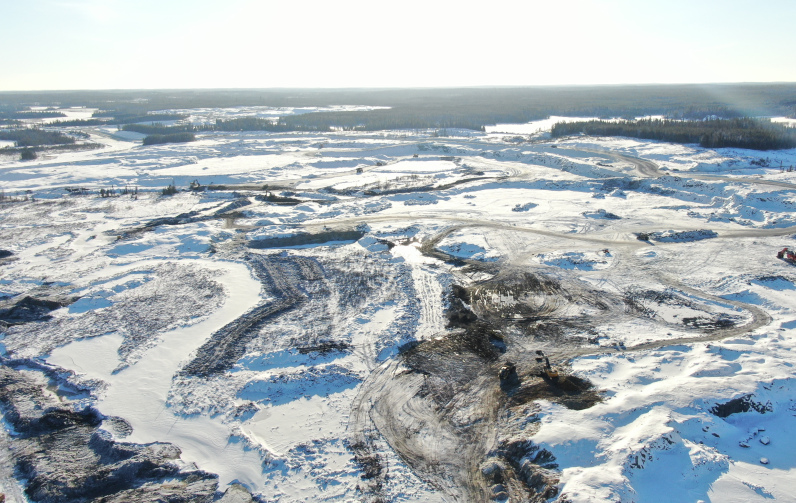Gold Fields has faced criticism for its plan to acquire Yamana Gold, operators of Canadian Malartic, Canada's largest gold mine. Courtesy of Yamana Gold.
Welcome back to your weekly mining news recap, where we catch you up on some of the news you may have missed. This week’s headlines include a look into the world of gem processing, updates to the Yukon’s carbon rebate program and Barrick adds life to its mine in Zambia.
In last week’s recap we mistakenly reported the Los Filos mineral reserves as grading at 0.86 per cent rather than grams per tonne, and stated that the company’s – rather than the operation’s – mineral reserves increased 44 per cent. We apologize for the errors.
Pure Gold Mining has suspended all operations at its PureGold mine in Red Lake following an announcement regarding a lack of external funding. Pure Gold’s current cash balance rests at $2 million, with a deficit of approximately $13 million. Despite employing several cost-cutting measures, a rough start to the project that involved the company unknowingly mining at the wrong end of the deposit ultimately played a key role in the cessation of operations.
While the vote for Laurentian University’s future resulted in a favorable outcome, many post-secondary students and staff may have been left wondering about the stability of mining programs in Canada. Despite a decrease in mining program enrollment over the last few years, according to Hana Mitri, chair of CIM’s Canadian Mining Schools Committee said that mining education follows the up-an-down cycle as the industry and prospects for graduates remain high.
Suncor Energy will acquire Teck Resources’ 21.3 per cent stake in the Fort Hills oilsands project for roughly $1 billion, as reported by Global News. The oil sands mine, located north of Alberta’s Fort McMurray, has a capacity of 194,000 barrels-per-day, and is co-owned by Total Energies EP Canada, Suncor and Teck. Suncor’s stake in the project will increase to 75.4 per cent, and Total Energies will own the rest.
A team member from Procon, Newcrest Mining’s contractor, was killed on Oct. 22 at the company’s B.C.-based Brucejack mine, as reported by Business in Vancouver. The mine’s rescue team evaluating how to the access the location of the incident. Mining and processing work at the underground operation have been suspended and an investigation into the incident is ongoing.
Promising drill results could lead to Barrick’s Zambian Kumwana copper mine life being extended to 2060 up from 2042, as reported by Reuters. The Kumwana mine is one of Zambia’s largest copper producers, with the country gaining 70-per cent of its export earnings from mining. The country’s government is set to restructure the mineral royalty tax on copper, which is expected to take effect in January 2023.
Rio Tinto has addressed an open letter to the shareholders of Turquoise Hill Resources after proxy advisory firm ISS recommended voting against Rio Tinto’s proposed takeover offer. The letter outlines potential technical, financial and macroeconomic risks associated with the project. In its response, Rio Tinto warned that Turquoise Hill shareholders could be responsible for $4.9 billion in funding needed to complete the project. Last week, proxy advisor Glass Lewis recommended that Turquoise Hill shareholders vote in favour of Rio Tinto’s offer of $43 in cash per share.
Michael Valitutti, a graduate gemologist working at Nathan Hennick & Co. Ltd., plays an active role in the sourcing of gemstones for fine jewellery. COVID-19 threw the jewellery industry for a loop with the inflation of gem prices and the interruption of mining operations around the globe. Aside from gem treatment, Valitutti is dedicating his time and energy to developing a new jewellery collection using the practice of electroforming, which will grant him a “cleaner, bolder design.”
The Yukon Chamber of Mines is supportive of the Yukon government’s changes to the carbon pricing rebate program aimed at mining operators, but will still require at least a year in order to understand the full impact, as reported by Yukon News. The changes to the program would “bring the territorial legislation in line with new federal requirements.” The legislation merges the mining and general business rebates while simultaneously slimming down admin requirements for placer and quartz mining operators.
Joe Foster, gold fund manager at VanEck, Yamana Gold’s top shareholder, opposes Gold Fields’ proposed merger with the company, as reported by Reuters. According to the news outlet, Foster said, “I don’t endorse the deal on either side. It’s a deal that just doesn’t make fundamental sense to me.” VanEck is also a major shareholder in Gold Fields.
Third quarter reports are beginning to be released to the public:
Yamana Gold earned US$19.8 million in the third quarter, producing 241,302 gold equivalent ounces (GEO) at an all-in sustaining cost (AISC) of US$1,148.
Cameco recorded a net loss of $20 million in Q3. The company produced two million pounds of uranium and sold 5.3 million pounds at an average realized price of $59.65 per pound, 48 per cent higher than the same quarter last year.
Eldorado recorded a net loss of $50.5 million in the third quarter. The company produced 118,791 ounces of gold at an AISC of $1,259 per ounce sold.
Newcrest produced 527,000 ounces of gold and 32,000 tonnes of copper in Q3. The company’s total AISC amounted to US$1,098 per ounce.
Agnico Eagle had a net income of US$79.6 million for the third quarter, producing 816,795 ounces of gold at an AISC of US$1,106 per ounce.
That’s all for this week. If you’ve got feedback, you can always reach us at editor@cim.org. If you’ve got something to add, why not join the conversation on our Facebook, Twitter, LinkedIn or Instagram pages?




